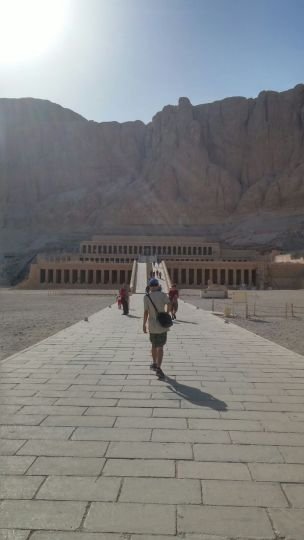Modern Luxor was born from the remains of Teb, the capital of ancient Egypt in the New Kingdom era.
22 JULY 2017
The city of Luxor is divided into two with the Nile river. We left our hotel early on the morning of the morning of the morning of the 22nd of july as we were staying on the opposite side of the temples, and I moved to the opposite side of the city with one of the boats used by the local people. After a short walk, he helped the Karnak Temple.
KARNAK TEMPLE
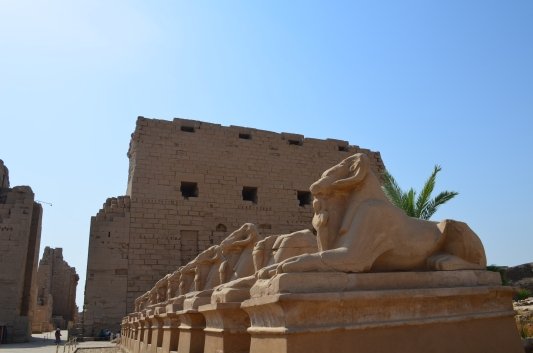
The Karnak Temple, dedicated to the king of the gods in a large area, houses countless courtyards, gardens, giant statues and a large sacred lake. No Masquerade was built in the construction of the Karnak Temple and 80,000 workers worked in the construction.
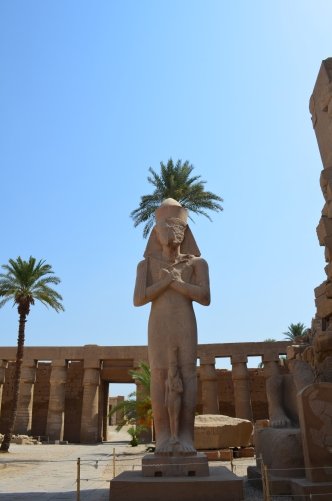 .Ramses Statue;
.Ramses Statue;
One of the girls is at the entrance of the large Hypostyle Hall with impressive granite sculpture of 2.Ramses, standing in front of her leg.
The outer face of the temple in bright shades is quite different from the present day.
There are many hieroglyphs in different places in the temple. These hieroglyphs reveal many unknowns about ancient corn. Hieroglyphs have contents about the plants and animal species that lived at that time.
Holy Lake;
Priests were washed in the Holy Lake before the temple rites. The stone giant Skarabe Khepri statue located in the north of the lake was made by 3.Amenofis.
Luxor Temple
Much of the temple dedicated to Amon, Mut, and Hons, the three gods of Teb, was completed by the 3rd Amenophis in Pharaoh in 18th and added to it during the reign of 2nd Romanes in 19th. The temple was repaired by many rulers, including Alexander the Great. In 1881, the archaeologist Gaston Maspero discovered the temple, but the small village built into it later became an obstacle. The village was later removed, but the village mosque Sheikh Yusuf al-Haccac is still standing
The entrance, which is the entrance of the temple, is adorned with the paintings of victory which Ramesses won in Kadeş War. On either side of the entrance is a 25 meter high sculpture and a stitched stone sitting on the Ramses.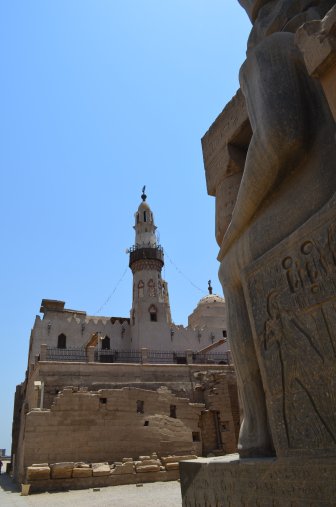
There are many hieroglyphs in the temple that mention warfare. In the birth room in the east there are reliefs depicting the divine birth of 3.Amenofis.
Memnon Sculptures
3.The two giant statues of Amenofis sitting on the throne of 18 feet high meet the visitors. They actually protected the grave temple believed to be Amenophis's largest temple in Egypt. The temple was looted for building material by the next pharaohs and was gradually destroyed and destroyed with annual floods. the only thing that remains is these giant sculptures without faces.
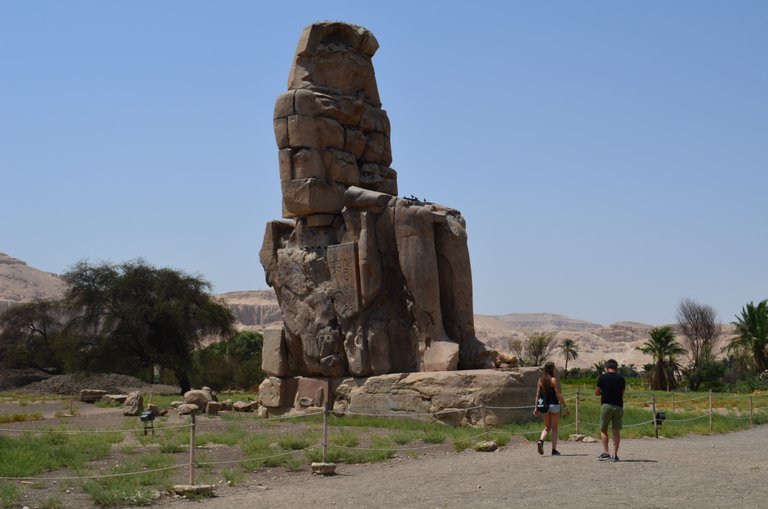
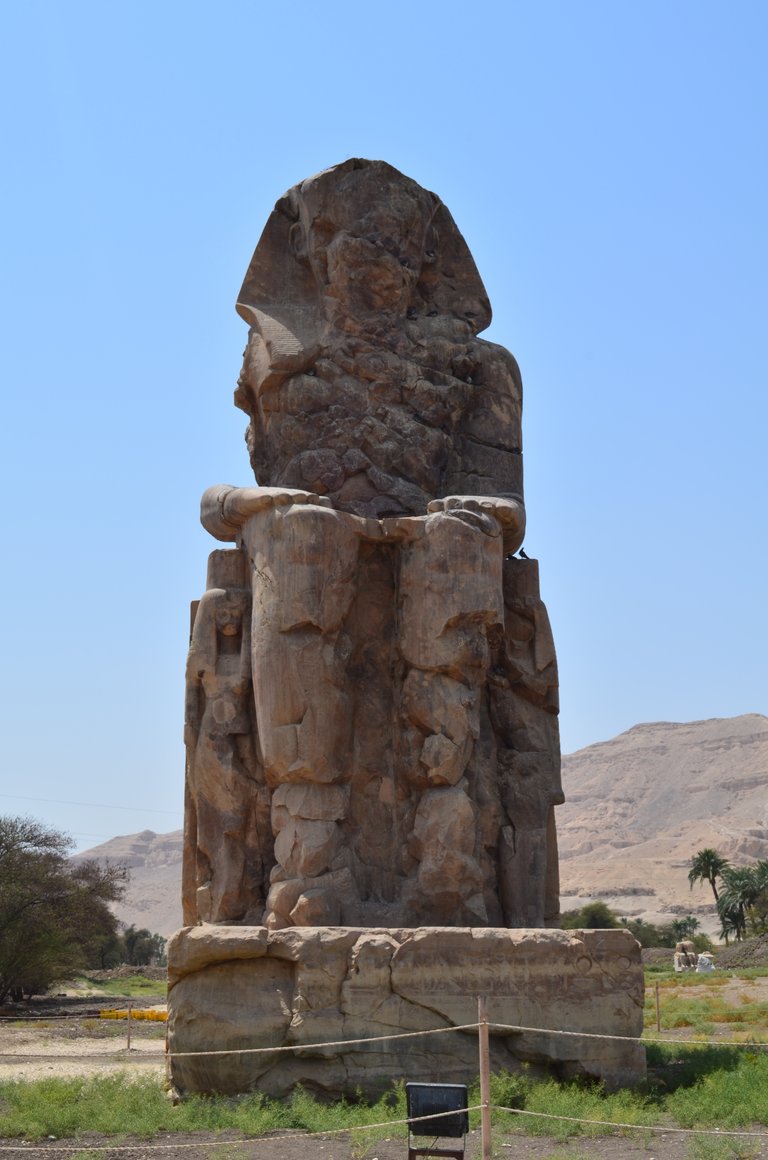
Valley of the Kings
The Valley of the Kings, far from the eyes in the desert, was the necropolis of the Pharaohs of the New Kingdom. After the Pharaohs 1.Tutmosis, they began to dug Teb Hills into their graves in order to protect the invaluable treasures buried with them from the thieves. But all the grave chambers have been robbed except for the magnificent graves of Yuya, Tuya and Tutankhamon, even though their places are hidden. Nowadays only majestic grave chambers and corridors remain.
You need to buy a separate ticket to enter Tutankhamon's grave. For another 3 graves, 50 Egyptian Pounds, only Tutankhamon's grave requires 50 Egyptian Pounds.

I could not take pictures because it was absolutely forbidden to take pictures in the Valley of the Kings. If your hand goes to the phone, your phone can be confiscated. There are two officers in each room for surveillance.
In Tutankhamon's grave, Tutankhamon is exhibited in glass outside the sarcophagus. On the walls of the room of the grave there are paintings of the "Opening of the Walls" Ceremony. In the same room Tutankhamon is in the sarcophagus.
Hatshepsut Temple
The grave temple of Hapshepsut, located in the Deyrü'l Bahri and partially carved on the rocky side with the naked tops rising in the background, offers a breathtaking view. The temple was built by Queen Hatshepsut from the 18th. The Temple was destroyed by Ramesses and later, and later converted into a monastery by Christians. Here comes the name of Deyrü'l Bahri which means North Monastery.
